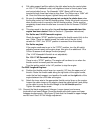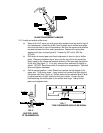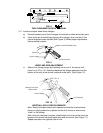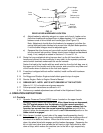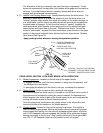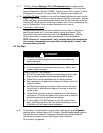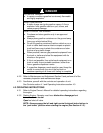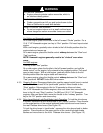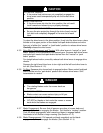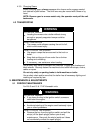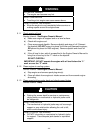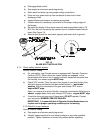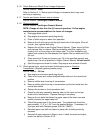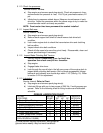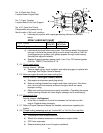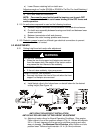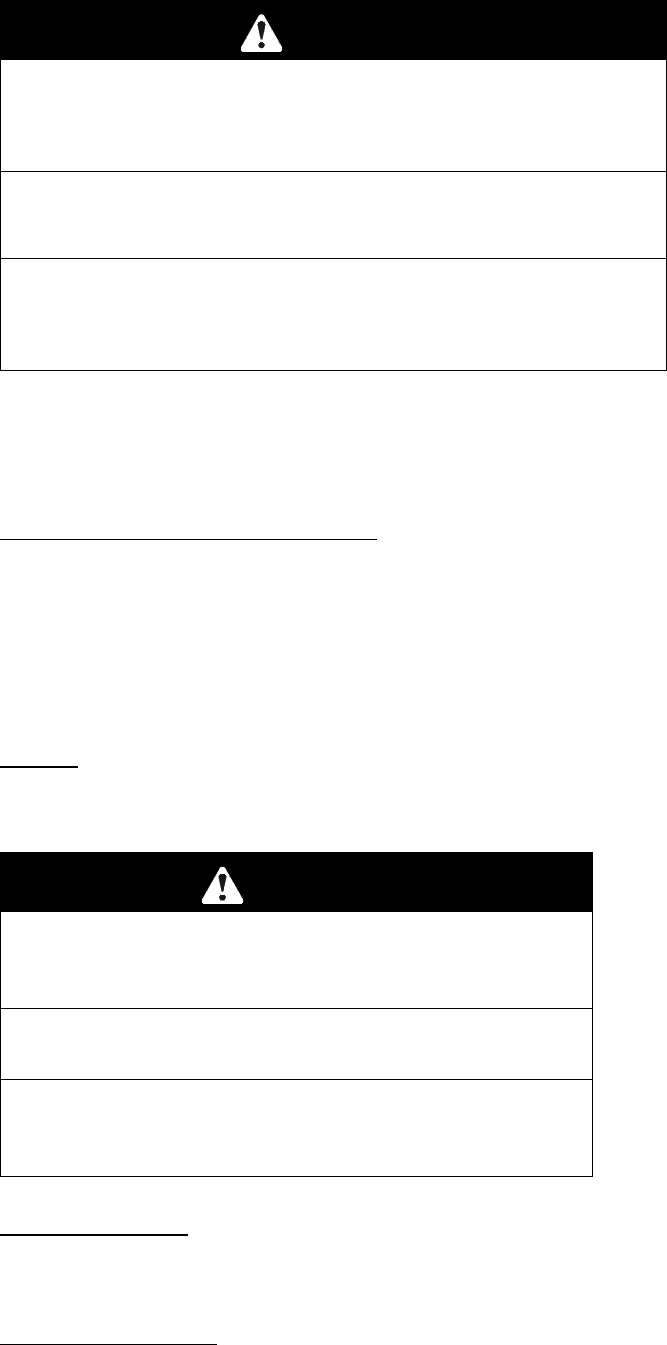
- 20 -
CAUTION
POTENTIAL HAZARD
♦
If the nuetral lock latches are not completely engaged the
drive levers could unexpectedly slip into the forward drive
position.
WHAT CAN HAPPEN
♦
If the drive levers slip into the drive position, the unit could
lurch forward and cause injury or property damage.
HOW TO AVOID THE HAZARD
♦
Be sure the pins protruding through the slots of each neutral
lock latch are completely engaged in the rear slot of each
latch.
To place the drive levers in the drive position, firmly hold the drive levers, place
thumbs on the upper portion of the neutral lock/park brake latches and move
them out of either the “neutral” or “park brake” position to release drive levers.
Carefully
release the drive levers.
4.3.5 Drive Wheel Engagement and Turning: With drive levers in “neutral” or “park
brake” position, shift transmission into desired gear. Squeeze both drive levers
and move both neutral lock/park brake latches from the “neutral” or “park
brake” position.
For straight ahead motion, smoothly release both drive levers to engage drive
wheels.
Squeeze the right hand drive lever to turn right and the left hand drive lever to
turn left (See Section 4.1.2).
4.3.6 To Stop: Squeeze drive levers back to engage brakes. Move neutral lock/park
brake latches into the “park brake” position and release drive levers. Shift
transmission to neutral.
DANGER
POTENTIAL HAZARD
♦
The rotating blades under the mower deck are
dangerous.
WHAT CAN HAPPEN
♦
Blade contact can cause serious injury or kill you.
HOW TO AVOID THE HAZARD
♦
DO NOT
put hands or feet under the mower or mower
deck when the blades are engaged.
4.3.7 Blade Engagement: Be sure that all persons are clear of mower deck and
discharge area before engaging the blades. Set throttle to “midway” position.
Push the blade engagement arm forward and down to engage blades.
Accelerate to full throttle to begin mowing (See Section 4.1.4).
4.3.8 Blade Disengagement: Pull upward and back completely on the blade
engagement arm to disengage the blades. (See Section 4.1.4)



